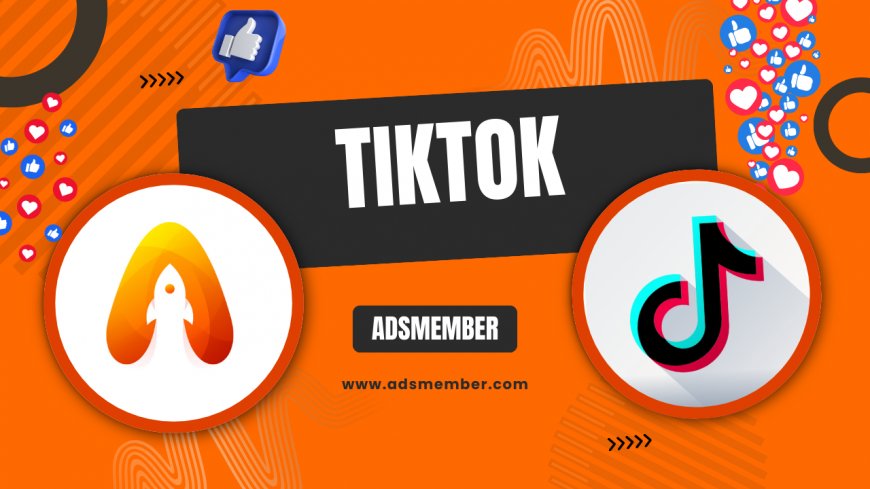Why Are They Banning TikTok? Unpacking the Controversy
Curious about why they are banning TikTok? Explore the controversy, from data privacy fears to political tensions, and what it means for users worldwide.

Honestly, the question of 'why are they banning TikTok' has been buzzing louder than a viral dance challenge. As a platform with over 1 billion active users globally (according to Statista, 2023), TikTok’s rapid rise has sparked both admiration and alarm. Governments, especially in the U.S. and India, have pushed for bans citing data privacy risks, national security threats, and even cultural concerns. In my opinion, this isn’t just about an app—it’s about power, control, and the future of digital spaces. Let’s dive into the real reasons behind the bans, the evidence fueling the fire, and what it means for creators and users like us.
The Core Reasons Behind TikTok Bans
TikTok, owned by Chinese company ByteDance, has been under intense scrutiny. The primary reason for bans boils down to fears over data privacy and security. Governments worry that user data—think location, browsing habits, and personal info—could be accessed by the Chinese government. This isn’t just speculation; it’s rooted in China’s National Intelligence Law, which can compel companies to share data. For me, this raises red flags about how much we really know about app permissions.
Data Privacy: The Biggest Concern
Let’s get technical for a second. TikTok collects vast amounts of data, from device IDs to keystroke patterns. A 2022 report by Internet 2.0 found that TikTok’s data collection practices were more intrusive than other social platforms. U.S. lawmakers fear this info could be weaponized for espionage or influence campaigns. Honestly, as someone who’s scrolled endlessly on TikTok, I’ve wondered how much of my life they’ve logged.
Political Tensions Fueling the Fire
Beyond data, geopolitics plays a massive role in why they are banning TikTok. The U.S.-China rivalry has turned tech into a battleground. In 2020, the Trump administration labeled TikTok a national security threat, pushing for a ban or forced sale to a U.S. company. While Biden paused that order, the debate rages on. I think this is less about TikTok itself and more about signaling distrust in Chinese tech.
Case Study: India’s 2020 Ban
India banned TikTok in June 2020 after a border clash with China, citing security risks. Over 200 million Indian users were cut off overnight. This wasn’t just a policy move—it was emotional. Local creators lost livelihoods, and alternatives like Instagram Reels surged. In my view, this shows how bans can reshape entire digital ecosystems. Curious about Instagram’s growth? Check out Instagram Tips for more.
Content and Cultural Concerns
Not all bans are about data or politics. Some countries argue TikTok promotes harmful content—think explicit videos or misinformation. In places like Pakistan, temporary bans have been imposed over 'immoral' content. I get the concern, but isn’t this a slippery slope? Platforms like YouTube face similar issues, yet they dodge the same heat. It feels inconsistent to me.
How TikTok Responds to Criticism
TikTok has fought back, emphasizing its content moderation policies and transparency reports. They’ve even moved U.S. user data to Oracle servers to ease privacy fears. But skeptics, including me at times, wonder if it’s enough. Can we trust a company tied to a government with strict data laws? That’s the million-dollar question.
What a Ban Means for Users and Creators
If TikTok gets banned in more countries, the impact on creators could be devastating. Many rely on the app for income through brand deals and the Creator Fund. A 2023 Statista report noted that top TikTokers earn millions annually. Losing that platform overnight? Heartbreaking. As a content creator myself, I feel for them. Users would also lose a unique space for creativity and connection.
Alternatives to TikTok: A Quick Look
- Instagram Reels: Great for short-form video, with a familiar interface.
- YouTube Shorts: Offers monetization but lacks TikTok’s viral algorithm.
- Snapchat Spotlight: Less popular, but still a contender for quick clips.
Switching platforms isn’t seamless, though. Each has a different vibe, and rebuilding an audience takes time.
How to Protect Yourself as a TikTok User
While the ban debate rages, you can take steps to safeguard your data on TikTok. I’ve been doing this myself, and it’s easier than you think. Follow this guide to minimize risks without ditching the app entirely.
Step-by-Step Guide to Secure Your TikTok Account
- Review Privacy Settings: Go to Settings > Privacy and set your account to private. Limit who can see your videos or message you.
- Disable Data Sharing: Under Privacy, toggle off 'Personalized Ads' and restrict data collection where possible.
- Use a Secondary Email: Avoid linking your primary email or phone number. Create a throwaway account for sign-up.
- Limit App Permissions: On your phone, restrict TikTok’s access to your camera, location, and contacts via app settings.
- Log Out When Not in Use: Simple but effective—don’t stay logged in 24/7.
These steps won’t make you invincible, but they’re a start. I’ve noticed less creepy ad targeting since doing this!
Unique Tip: Diversify Your Digital Presence
Here’s a tip you won’t find everywhere: don’t put all your eggs in one app basket. TikTok’s future is uncertain, so start cross-posting content on Instagram or YouTube now. I learned this the hard way after a platform I relied on changed its algorithm overnight. Use tools like Buffer to schedule posts across platforms effortlessly. It’s a small effort for big peace of mind.
FAQ: Why Is TikTok Facing a Ban in the U.S.?
The U.S. is considering a TikTok ban due to national security and data privacy fears. Lawmakers worry that ByteDance, TikTok’s parent company, could share user data with the Chinese government. Bills like the RESTRICT Act aim to block apps posing risks. It’s a tense situation, and honestly, I’m not sure a full ban will happen soon—it’s more likely we’ll see a forced sale.
FAQ: Which Countries Have Already Banned TikTok?
India banned TikTok in 2020 over security concerns after a border conflict with China. Afghanistan, Pakistan, and Iran have imposed full or partial bans, often citing cultural or moral issues. Some European countries have restricted it on government devices. Check updates on Statista for the latest list—it’s always evolving.
FAQ: Can TikTok Users Still Access the App During a Ban?
During a ban, access depends on enforcement. Some users bypass restrictions with VPNs, though this can violate local laws. App stores may remove TikTok, blocking new downloads, but existing installs might work temporarily. I’d caution against risky workarounds—legal consequences aren’t worth a viral video.
FAQ: What Can TikTok Do to Avoid Bans?
TikTok could avoid bans by fully separating from ByteDance, perhaps through a sale to a non-Chinese entity. Enhancing transparency around data practices and localizing data storage (as they’ve done with Oracle) helps too. In my opinion, rebuilding trust with governments is their biggest hurdle—it’s a long road ahead.
What's Your Reaction?
 Like
0
Like
0
 Dislike
0
Dislike
0
 Love
0
Love
0
 Funny
0
Funny
0
 Angry
0
Angry
0
 Sad
0
Sad
0
 Wow
0
Wow
0



















































